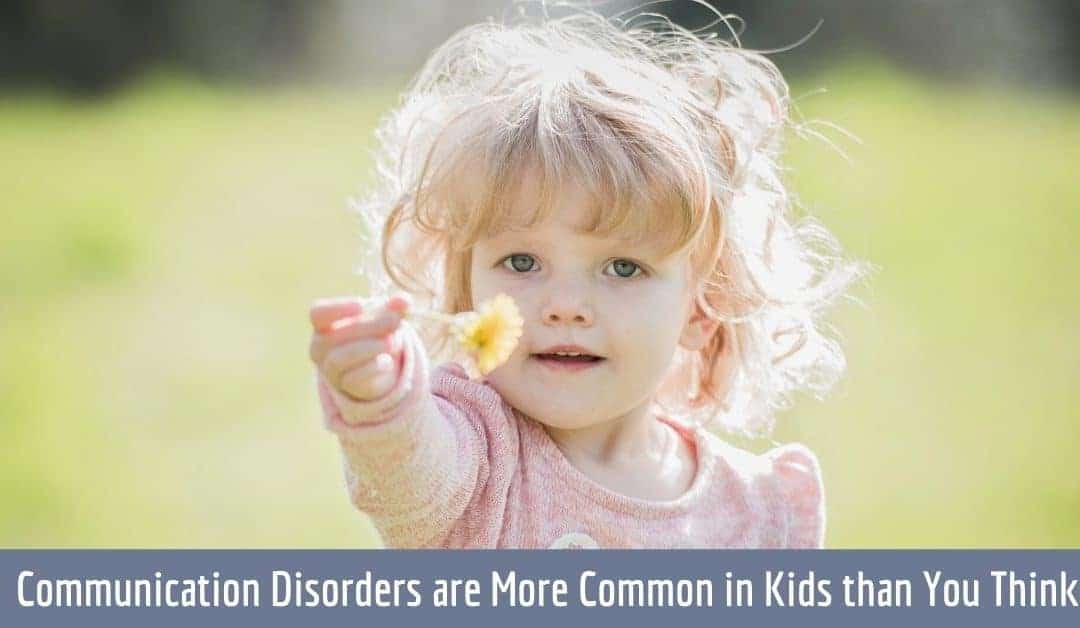Over 10% of children have a communication disorder, which is among the most common disabilities among kids. According to the National Institute on Deafness and Other Communication Disorders:
- For kids between the ages of 3-17, nearly 1 in 12 has had a disorder related to voice, speech disorders, language, or swallowing
- Nearly 11% of children among children ages 3-6 have a communication disorder
These statistics highlight that communication disorders are much more common in children than we think. The Diagnostic and Statistical Manual of Mental Disorders (DSM-5) categorizes communication disorders into four distinct groups, providing a comprehensive framework for understanding these issues. Though it’s common, identifying and addressing communication disorders is often delayed for quite some time. Untreated symptoms can profoundly impact learning, behavior, and social engagement, often coexisting with other developmental disorders such as autism and intellectual disabilities. This affects performance in school as well as cognitive and social development. Being aware of common communication disorders and their impact is crucial to being able to identify and effectively address symptoms!
Common Speech and Language Disorders
There are several types of communication disorders which are often related. They involve varying levels of difficulty with speech, voice, and language comprehension. Common disorders include:
- Phonological Disorder: is related to speech, children who deal with this disorder have difficulty with developing the level of speech appropriate for the specific age group. They may have a hard time articulating words, producing complex sentences, substitute particular words and/or sounds etc.
- Expressive Language Disorder: is characterized by difficulty with verbal communication. Children may struggle to remember words, use the proper tense, have limited vocabulary, use really simple sentences and basic words, etc.
- Childhood Onset Fluency Disorder: previously known as stuttering, is characterized by disruptions in the flow of speech such as repetitions, hesitations, and prolongations of speech sounds.
- Speech Disorder: affects an individual’s ability to articulate speech sounds, manage fluency, and produce voice effectively.
- Speech Sound Disorder: affects a child’s ability to articulate speech sounds, leading to potential challenges in being understood in everyday situations. These speech sound disorders may arise from various factors, including congenital issues like cleft palate, dental problems, or auditory challenges.
These are broad disorders that may be experienced mildly to profoundly. There are also specific types within these disorders which share key characteristics of restricted ability to express and comprehend verbal communication.
Causes & Symptoms of Language Development
One of the most common causes of communication disorders among children is hearing loss. Nearly 15% of children have some degree of hearing loss in one or both ears. This health condition can be caused by existing medical conditions, genetic history, or exposure to loud noise. Impaired hearing can significantly strain communication, causing:
- Sounds be muffled or slurred
- Difficulty distinguishing words and following conversations
- Limited ability to hear in environments with noise
- Tinnitus, which is a buzzing or ringing noise in one or both ears
These symptoms make engaging in conversations difficult. Developing strong language skills is crucial for effective communication. The ability to hear and process information is restricted, which can produce communication disorders and impact language development. Other causes of communication disorders include:
- Autism
- Attention deficit or hyperactivity disorder
- Developmental or neurological disorder
- Brain injury
- Nervous system disorder
Nonverbal communication also plays a significant role in how children express themselves, and these disorders can affect them. Verbal and nonverbal communication are both crucial in understanding language development among children from bilingual or multilingual households. If untreated, symptoms can worsen, which can be detrimental to a child’s development. There are effective ways to treat communication disorders that can alleviate symptoms and drastically improve educational and behavioral patterns.
Treatment Options by Speech Language Pathologist
The specific type of communication disorder (and cause) your child may be experiencing determines the most effective treatment option. Fortunately, there are useful ways to address and treat communication disorders, which can include the following:
- Behavioral Therapy: this kind of intervention focuses on developing effective skills to manage disruptive behavior – intrapersonal and communication skills. This is particularly useful for children with attention deficit or hyperactivity disorder who could benefit from having coping strategies and ways to focus.
- Speech Therapy: focuses on building and expanding communication skills by developing language, articulation, and fluency skills to address speech and language disorders. A speech language pathologist plays a crucial role in evaluating and treating these disorders.
- Changes to Environment: additional time, attention, aid, and quieter space can be really useful
In addition to these treatment options, your child’s hearing should absolutely be assessed to determine if this is contributing to the communication issues. You can do this by scheduling an appointment with a hearing healthcare professional for a hearing test.
Hearing tests involve a relatively quick and painless process that measures hearing ability in both ears. This establishes any impairment, the degree, and the specific type of hearing loss your child may be experiencing. Fortunately, there are effective ways to treat hearing loss. The most common treatment is hearing aids, which are small electronic devices designed to absorb, amplify, and process sound. This increases a person’s ability to hear, which enhances communication. Difficulties with speech sounds can significantly impact effective communication, making it essential to address any issues early on.
It is important to identify any issues with communication and hearing that your child may be dealing with. Early intervention can profoundly help with treatment and improve overall health!

